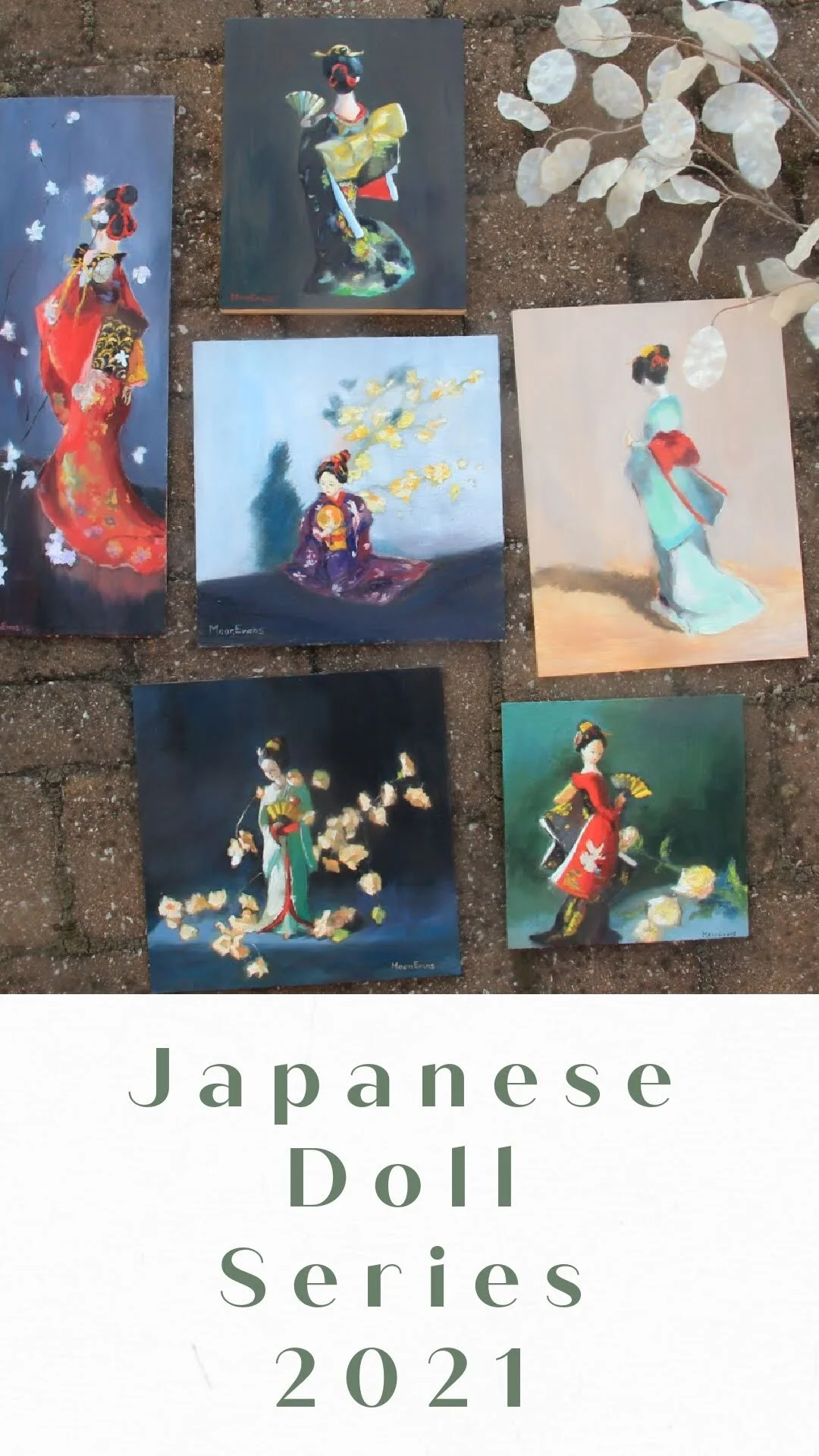The Story of Japanese Doll Oil Painting Collection - What Beauty Is
I'm intensely attracted to the Japanese Heian Period ( running from 794 to 1185 or 1192) culture. Their everyday living is the source of my inspiration in art.
What was Beauty in the Heian Period
The Tale of Genji was the first novel written and was popular among the Heian court. Based on the book, I learned the ancient aesthetics that is quite different from nowadays.
High-rank women born in the aristocratic family sit behind Sudare (screens or blinds). Only family members and servants can see their faces. Men judges by rumors as well as some of the Kimono's hemline. Men also relied on gossip or enjoyed peaking through to imagine the women appear. This kind of exotic culture affected my decision of which angel to paint the Japanese dolls.
Man can't see the woman's facial features clearly in the darkness. The following day after spending a night together that'll be the first time the man sees the woman's face. As a result, rank, elegance, writing ability, musicality, and many other factors contribute to "beauty."
On the other hand, the Heian aristocrats value obedient and fragile over distinctive and independent women. In chapter three, Yugao was described as heroin any man dream to have. She's a middle-class woman who's knowledgeable and graceful but doesn't have the high-rank women's pride. Furthermore, she's gullible. Those are the characteristic the Heian aristocrats were seeking that meant beauty to them.
Another critical characteristic is innocence. In the Young Murasaki chapter, you'll see a young girl lives on a mountain surrounded by spectacular landscapes. That's where the main character, prince Genji, first saw her and fell in love with her. Since she was still a child, prince Genji wanted to teach her how to be a "perfect" woman for him. He started to live with Young Murasaki after her grandmother passed away. He taught her koto (instrument), waka (poems) and provided her all the educations a high-rank woman needed to be "attractive." She was cute, but that's not good enough. This example is another clue to show the importance of being "beautiful" is not all about facial features. In that sense, maybe people from a thousand years ago understood what beauty is, unlike us.
The author Murasaki Shikibu paid great attention to seasonal changes and Kimono layers. When you read the book, you'll notice all the colors are meticulously calculated. It is a beautiful novel, and I'm so grateful that I can get access to it even more than a thousand years later.
Appearance V.S. Personality
I recalled a documentary. The head priest nun in Aoyama answered what beauty is.
"A woman's beauty is not about appearance. It's the personality that seeps out from within, and that's beautiful, like oxidized silver. That's a true beauty.
The more you adorn yourself, the more you are trying to cover up the void." The head priest nun started her practice since she was five.


